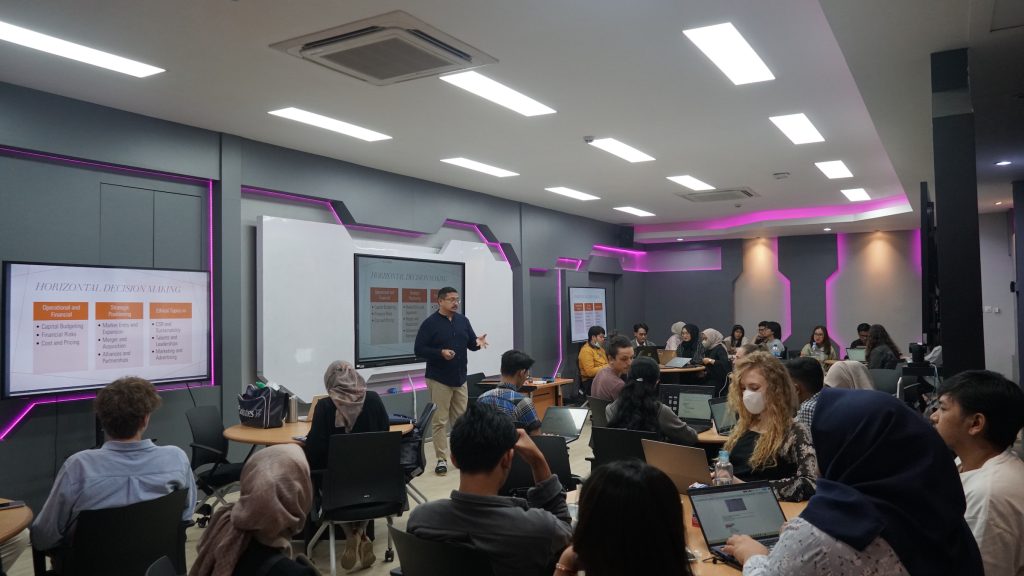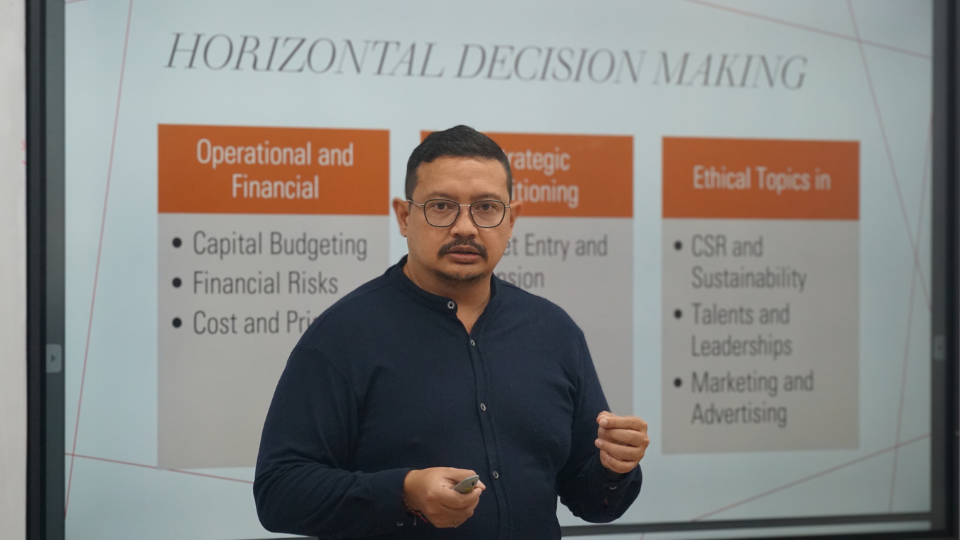When faced with significant and complex choices, the strategic decision-making process can become more complex, often resulting in stress and confusion. When any decision is essential, one must examine various variables with different relevance weights.
Radityo Prabowo, the CEO of DJE Holdings Indonesia (Edelman Indonesia and Zeno Group Indonesia), provided analogies and examples based on scenarios of how to make decisions in the real world in a guest lecture on Decision Making and Strategic Negotiation (12/9). Radityo involved students actively participating in complex cases related to business challenges.
Students are divided into groups to choose one company and then categorize the problems from low priority to high priority. He also displays a picture of various problems at one time and place. Meanwhile, students were asked to express their thoughts on this matter.
“Decision-making requires the ability to prioritize challenges effectively. “Different points of view are not a problem because they can enrich the decision-making process,” he explained.
Even though the decision-making process is quite complicated, he shared with students how to use a basic framework for effective decision-making. The first is creating goals or objectives, followed by developing alternative actions, evaluating options, choosing the best alternative, and continuing to make decisions and implementing the decisions themselves.
As a communications expert with 20 years of experience in broadcast media, communications institutions, industry, and government, he underscored the importance of value-focused thinking rather than simply making decisions to solve problems. Individuals and organizations can handle problems more quickly if they understand the values applied to decisions. These principles may be personal, reflect an individual’s beliefs, or may be consistent with the basic principles of a company.
Radityo also delved into the intricate relationship between decision-making and negotiation. In the real world, decision-makers frequently confront complexity, which becomes even more pronounced when dealing with multiple parties. In such scenarios, the Best Alternative Negotiated Agreement, or BATNA, emerges as the most favourable option for negotiating parties if negotiations falter and an agreement cannot be reached. Additionally, the ZOPA (Zone of Possible Agreement) exists, which defines the range within a negotiation where two or more parties can find common ground.
One of the students raised a question regarding whether corporate leaders consistently employ decision-making tools, given the plethora of options available.
“Unfortunately, that’s not always the case,” responded Radityo. “However, this is precisely why their use is so crucial.”
He elaborated on two primary advantages. First, these tools have been scientifically validated, allowing us to economize time on less critical matters. Second, they foster consensus among all parties engaged in the decision-making process.
Class coordinator Santi Novani, S.T., M.T., Ph.D., expressed the hope that this guest lecture would assist students in cultivating a mindset for employing System 1 or 2 thinking in their decision-making processes.





